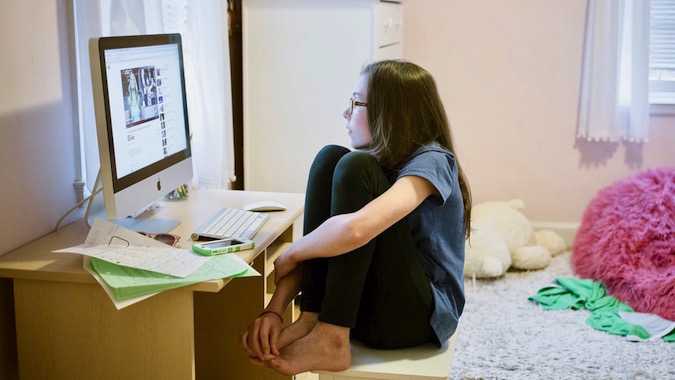The Danger Of Parasocial Relationships

Parasocial relationships are not a novel concept. The term was first used by scientists Donald Horton and Richard Wohl in 1956 when they officially coined it.
They explained that these relationships form because performers frequently imitate real-life interactions with their audience members.
For example, if a person listens to a lot of interviews with their favorite performer and watches as much content about them as they can, it causes them to treat the performer as a replacement for other social interactions, which often leads to obsessive dependence.
Meanwhile, the performer has no connection to any of the audience members and thus cannot reciprocate such affection.
The current digital age has promoted the formation of parasocial relationships. Content creators, for example, can interact with fans all over the world via social media.

They can respond to comments on Instagram and Twitter, as well as share photos and videos from their daily lives. Twitch and YouTube allow streamers to broadcast live content to their audience members. In other words, viewers can communicate directly with their favorite streamers in real-time, resulting in a new type of more realistic interaction.
Streamers, as opposed to celebrities who brand themselves, often appear more genuine than other content creators because their true personalities are on display through live streams.
Tips on Parasocial theory
The parasocial theory is a field of study that has been primarily pursued in communication studies, though work has also been done in psychology, sociology, and related disciplines.
The idea behind parasocial theory start in 1956 with Donald Horton and R. Richard Wohl's article "Mass Communication and Para-Social Interaction."
The authors argued that television had brought people into contact with those who were previously unknown and unknowable prior to the existence of visual media.
For your information, there were celebrities and many famous people before television was invented. But with the invention of televisions and as people start getting used to them, it became possible to have a face-to-face parasocial interaction with someone whose image and personality had invaded the privacy of one's own home.
The two authors focused their discussion on evening talk shows in which a host invites celebrity guests onto the show and conducted informal conversations with those guests in a format that made the viewer feel like they were a part of the conversation.
What Exactly Is Parasocial Interaction?
In today's digital age where communication is now done on a global level, parasocial interaction would include radio, television, films, and advertising. These tools create the illusion of a face-to-face relationship between the performer and the audience.
It's why adored actors are cast in leading roles, and why the latest celebrity is brought in to promote the latest perfume. Although, most times, the relationship is one-sided.
For example, you are not able to respond to questions asked by your best DJ on the radio, but it feels like a real-life, face-to-face relationship when you are listening to the DJ since they may be speaking to you as if you were friends in the same room as them.
Why does this work?
If you have checked the internet, neighborhood, favorite sports games; you may discover that advertising is all around us. This can be found on your screens, billboards, television, and radio.
Although advertising has been placed on us by the various media we've gotten really good at tuning it out and locating the source.
This is why it is now common that when we see someone displaying a product, it quickly tells the mind that this is an advertisement. Or, more specifically, an advertisement we don't believe.
Previously, parasocial relationships were mostly formed with television personas. Individuals now form relationships with their favorite bloggers, social media users, and gamers. Parasocial relationships' nature and intimacy have also matured.
Today’s reality television gives the viewers the ability to see the most intimate as well as personal lives of the television characters, and celebrities as they openly share their opinions and activities on social various media platforms such as Twitter and Facebook.
Defining Parasocial Interactions and Relationships
Now let us define a parasocial interaction. This is a type of interaction that takes place when a media consumer believes they are interacting with a media figure. The media figure could be a celebrity, fictional character, radio host, or even a puppet.
On the other hand, a parasocial relationship is usually formed when a media user imagines having a long-term bond with a media figure which may extend beyond the viewing or listening situation.
You should also note that this bond may be positive or negative.
As a good example, when a person adores the host of their local morning TV show and goes out starts talking about him as if he is one of their friends, that person has a parasocial relationship with the host.
What the heck is a parasocial relationship?
This "intimacy at a distance" could be created by television or movie characters, radio personalities, or even a favorite book character, but Wohl and Horton were specifically interested in studying viewers' relationships with TV news anchors.
Author Bio
This user has not submitted a user bio yet
Article Comments
No Comments!
At present there are zero comments on this article.
Why not be the first to make a comment?
Similar Articles
Sponsor
Search Articles
Experts Column
Latest Articles
Featured Articles
Most Popular Articles












